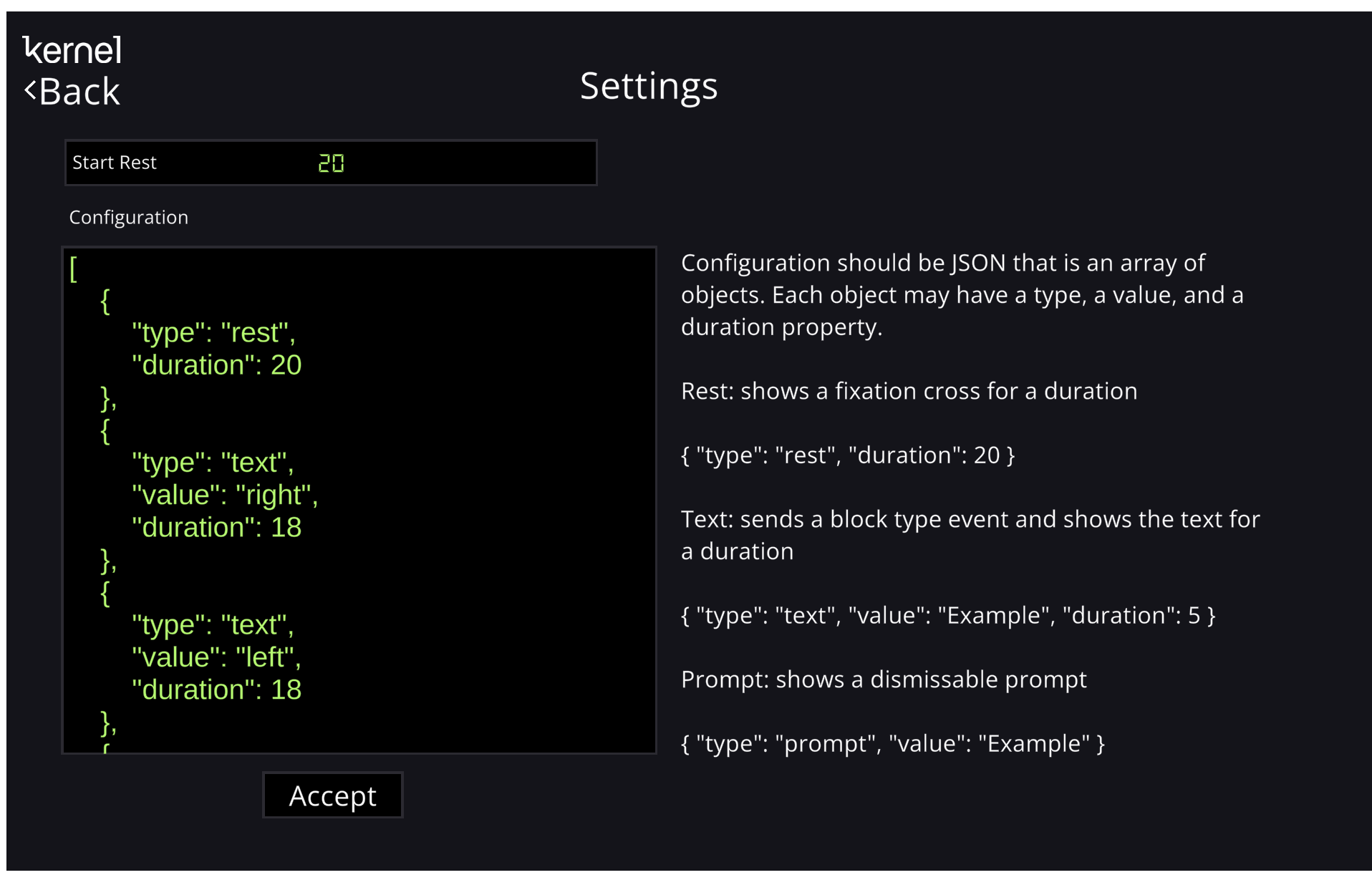N-back
- Start Rest: Duration of the baseline rest period (seconds).
- Match Percent: Percentage of stimuli (cards) that qualify as a “match.”
- Trials Per Block: Number of stimuli presented per block.
- Stim Duration: Length of time each stimulus is displayed (seconds).
- Cue Time: Duration of the cue shown before each block to remind the user of the block type (seconds).
- Block Rest: Duration of the rest period between blocks (seconds).
- Blocks:
- Dropdown menu: allows operator to select whether to include all three N-back block types or only a subset.
- Block Repeats: Number of times each block type is presented.
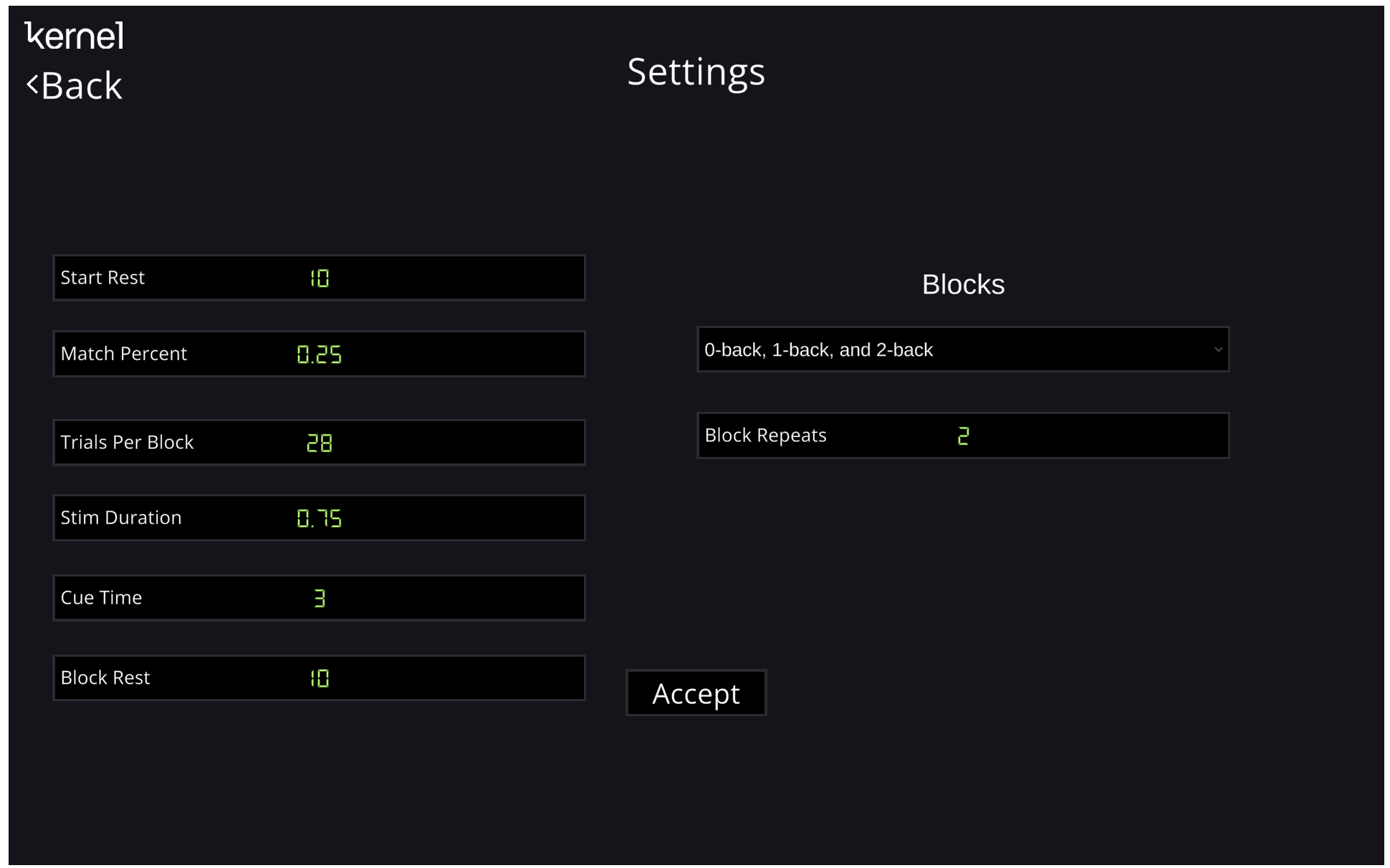
Finger Tapping
- Start Rest: Duration of the baseline rest period (seconds).
- Block Rest: Mean duration of the rest period between blocks (seconds).
- ITI Mean: The mean inter-trial interval (average time between trials within a block, in seconds).
- ITI Standard Deviation: Adds jitter to the ITI. ITI durations are sampled from a normal distribution with the mean set by ITI mean and the standard deviation specified here (seconds).
- Stimuli Type (dropdown):
- Visual – Displays a hand and indicates which finger to tap during each block.
- Audio – Plays white noise in the ear of the hand that should be tapping (no visuals).
- Both – Combines visual and audio stimuli.
- Randomize Blocks: If enabled, randomizes the order of left- and right-hand tapping within each pair of blocks.
- Blocks Per Side: Number of finger-tapping blocks performed per hand.
- Trials Per Block: For visual stimuli, the number of trials (finger-tap prompts) per block.
- Trial Duration: Duration of each trial (seconds).
- Max Rest Jitter: Amount of jitter added to the Block Rest duration (seconds). The mean is set by Block Rest. Rest durations will fall in the range of Block Rest +/- Max Rest Jitter.
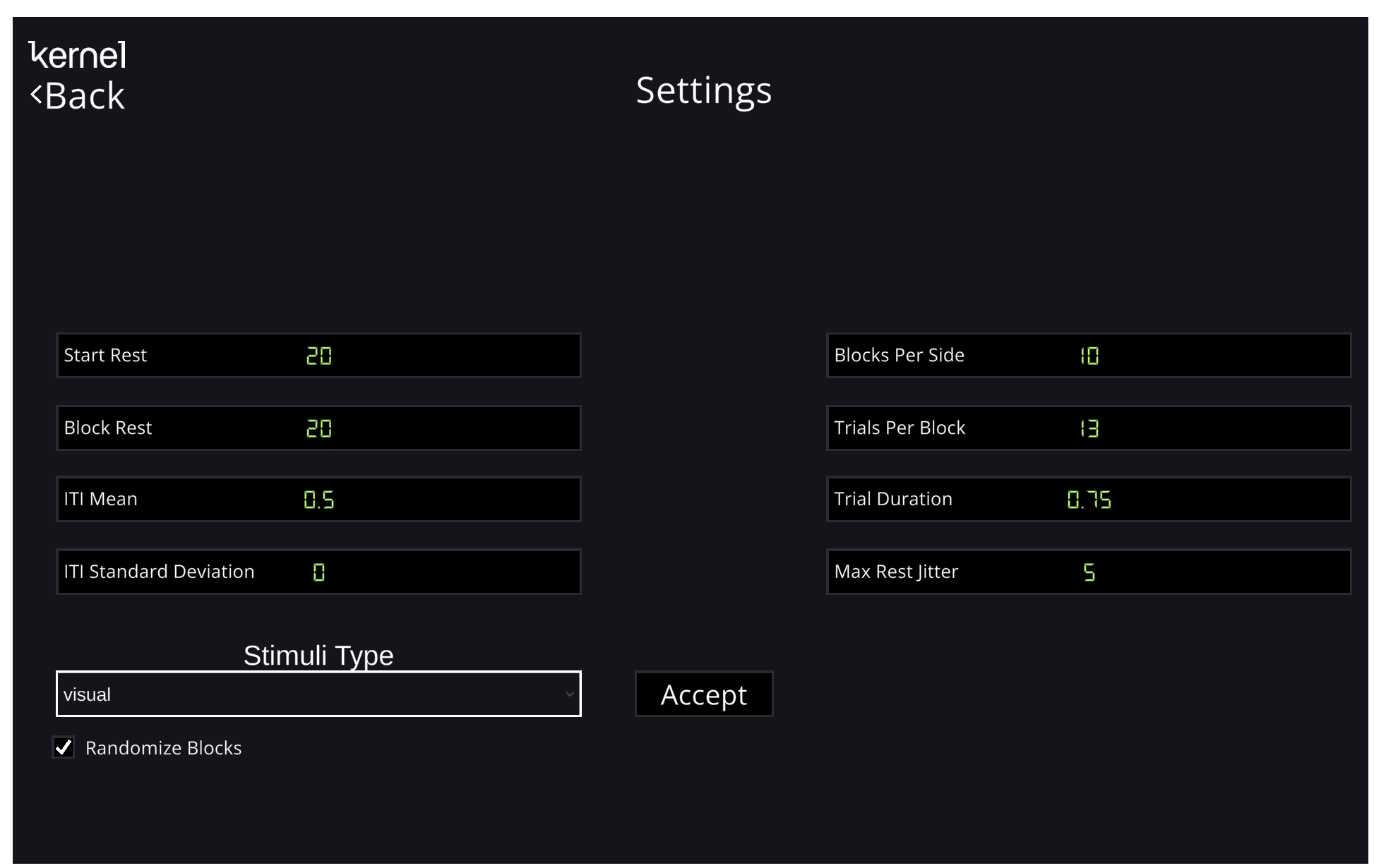
Verbal Fluency (VFT)
Participant completes verbal fluency tasks consisting of control and non-control blocks, where prompts are phonological (words beginning with a letter) or semantic (items in a category)
- Pre Control: Duration of the initial “pre-control” block, during which participants recite the days of the week (seconds).
- Start Rest: Duration of the baseline rest period (seconds).
- Block Rest: Duration of the rest period between blocks (seconds); only applies if Between Rest is enabled.
- Post Control: Duration of the “post-control” block, if enabled (seconds).
- Between Rest: If enabled, inserts a rest period between blocks.
- Final Control: If enabled, adds a “post-control” block at the end.
- Blocks (dropdown): Number of non-control blocks of phonological/semantic prompts. Each block contains 3 prompts.
- Version Number (dropdown): Determines which prompts are presented in the non-control blocks. Each prompt is shown for 20 seconds, making each block 60 seconds total. The available options depend on whether 2 or 3 blocks were selected in the Blocks dropdown.
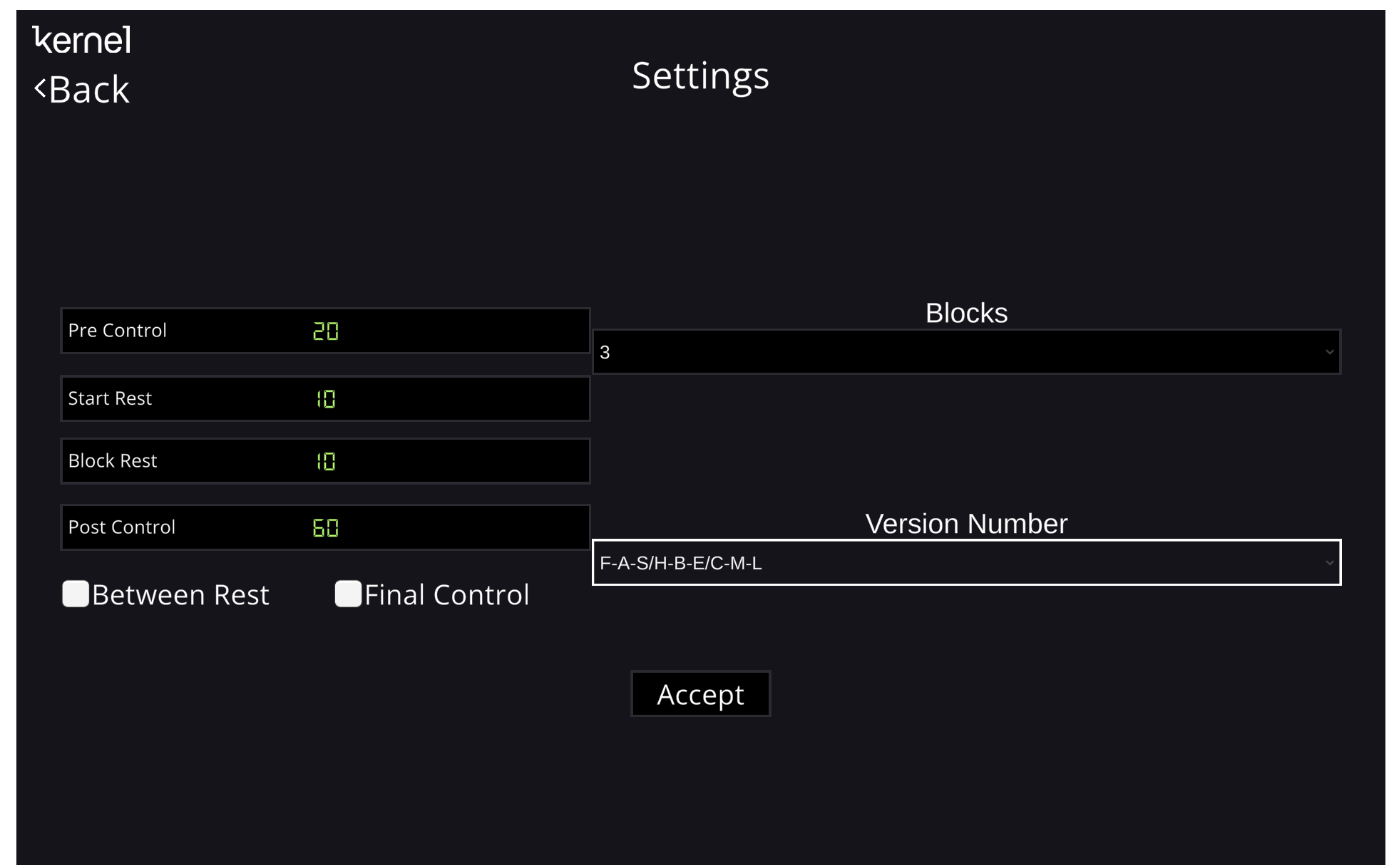
Resting State
- Baseline Rest duration: Duration of the baseline rest period (seconds).
- Video Duration: Length of the Inscapes video playback. The video will automatically fade to black at the specified time.
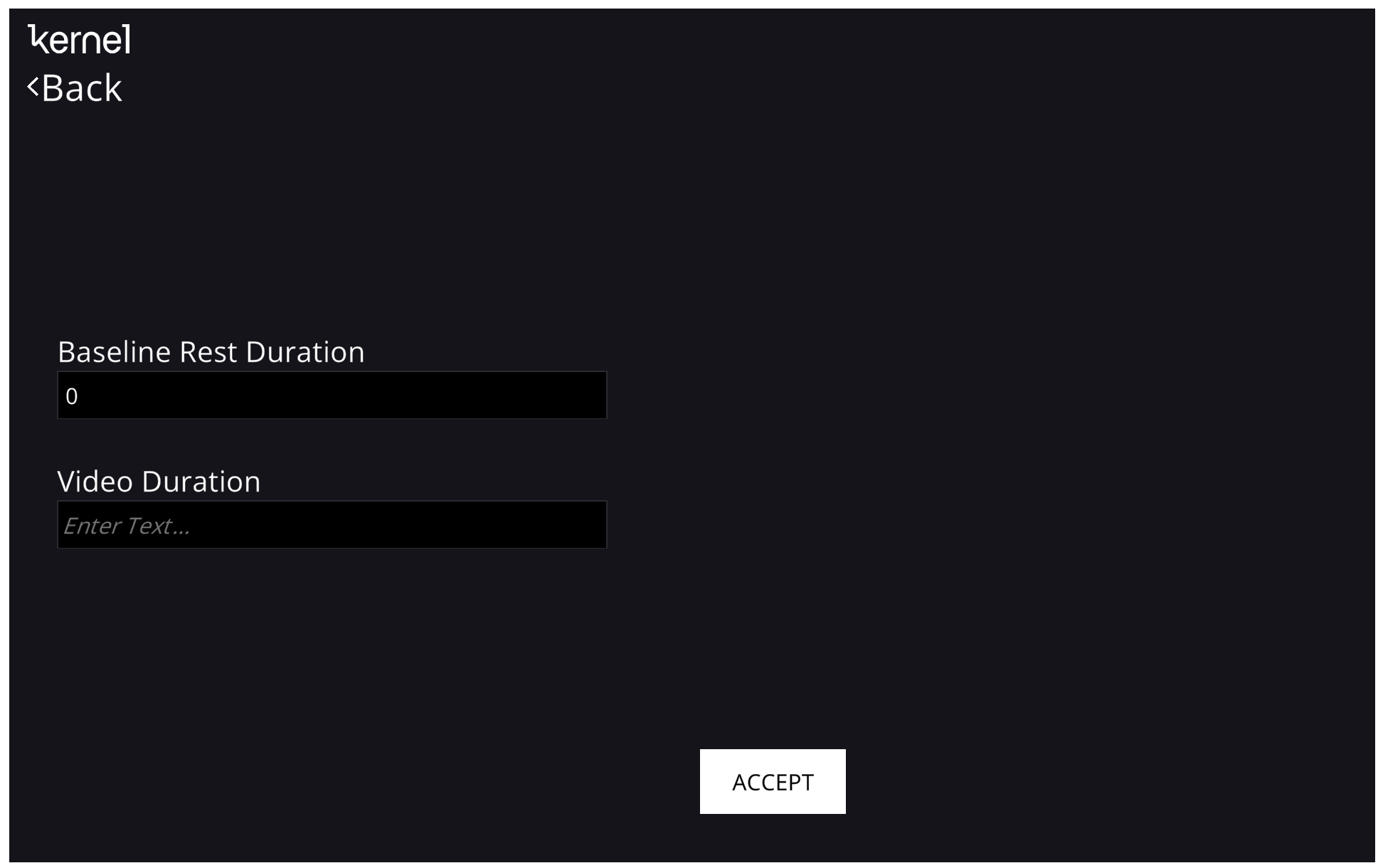
Breath-Holding
- Rest duration: Duration of both the baseline rest period and the rest periods between blocks (seconds).
- Breath Cycle Duration: Duration of each full breath cycle (seconds). For example, a 6-second cycle guides the participant to inhale for 3 seconds and exhale for 3 seconds.
- Breath Hold Duration: Duration of the breath-holding segment following several breath cycles (seconds).
- Breath Cycles Per Block: Number of breath cycles in each block before the breath-hold segment.
- Blocks Per Session: Total number of blocks in the session.
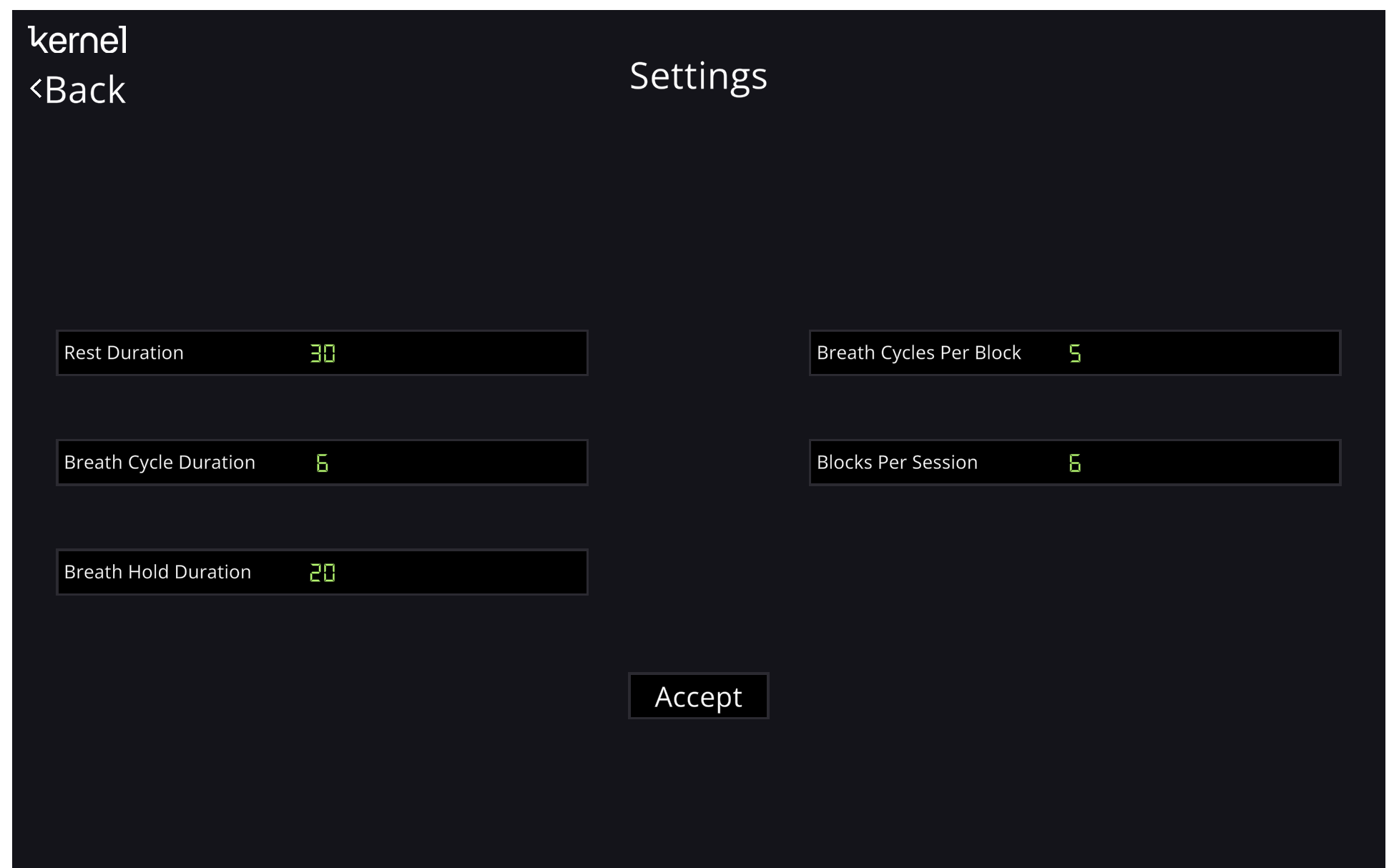
Auditory
- Session Number: Determines which set of audio clips will play. There are 6 unique versions, determined by number 1-6.
- Clip Duration: Duration each clip will play (seconds). Clips will be cut off at the specified duration.
- Average Rest: Mean duration of the rest period between blocks (seconds).
- Rest Standard Deviation: Determines the jitter added to the Rest duration (seconds). Rest durations are sampled from a normal distribution with the mean set by Average Rest and the standard deviation specified here.
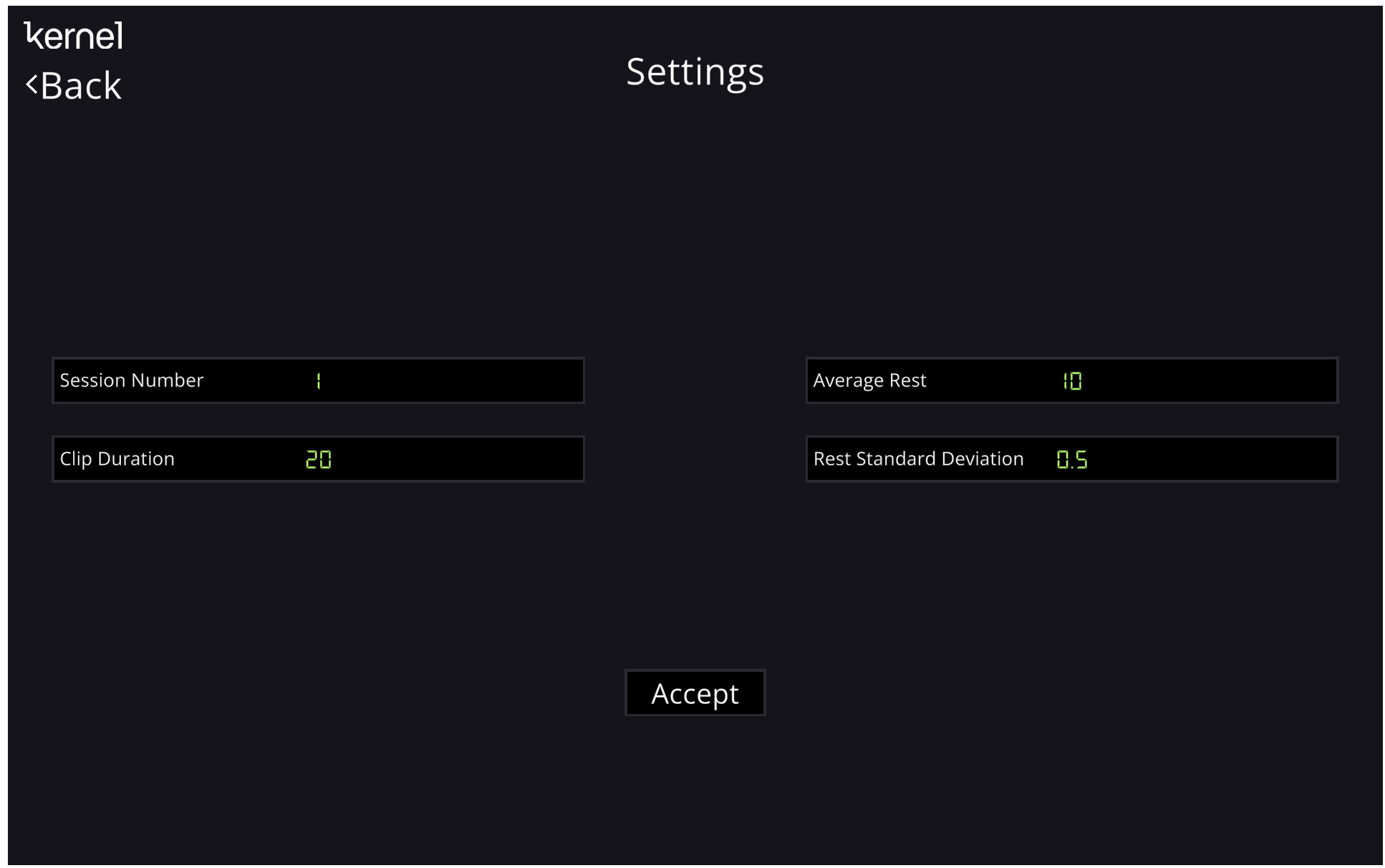
Retinotopy
A checkerboard wedge moves around a circular outline while flashing continuously. This task is used to map visual field representations in the occipital cortex.
- Start Rest: Duration of the baseline rest period (seconds).
- Stop Rest: Duration of the final rest period at the end of the task (seconds).
- Blocks: Number of stimulus blocks (periods in which the wedge is at a different location).
- Rotation Angle: Degrees the wedge moves with each step (degrees).
- Rotation Period: Duration of one full rotation of the wedge (seconds).
- Rotation Direction (dropdown): Choose clockwise or counterclockwise.
- Columns: Number of checkered columns displayed in the wedge.
- Degrees: Angular width of the checkerboard wedge (degrees).
- Flash Hz: Rate at which the moving checkerboard flashes (Hz).
- Starting Inner Radius: Radius of the circle in which the wedges appear (units depend on screen size, defaults to 1).
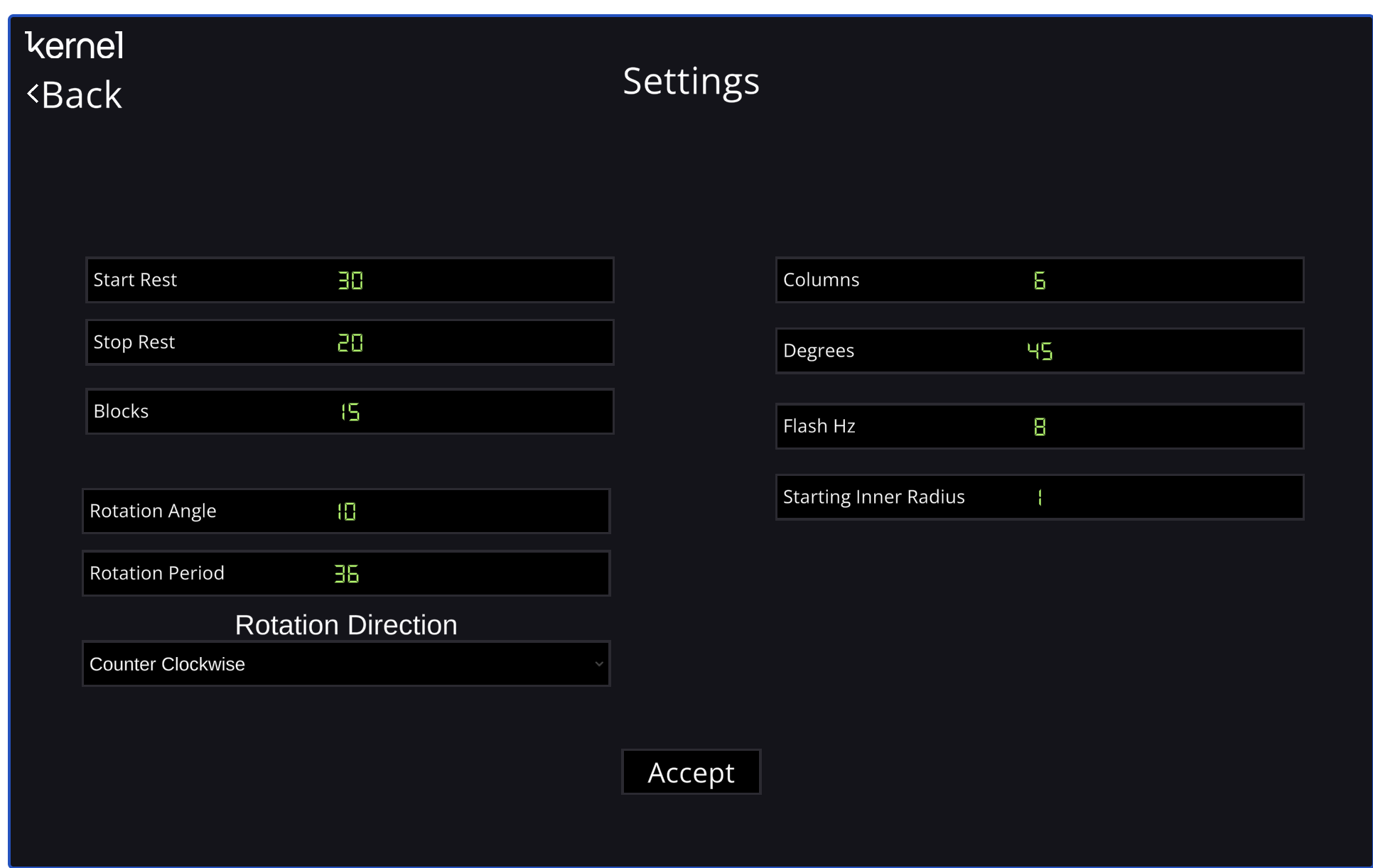
Generic
- Start Rest: Duration of the baseline rest period (seconds).
- Configuration: JSON-formatted instructions that define what the task displays. By default, this is populated with a finger-tapping task that mimics the standard Finger Tapping settings, displaying “Left” and “Right” on the screen. The JSON must be correctly formatted according to the instructions on the settings page; otherwise, you will not be able to Accept the settings.
